Sir John Monash, Personal Files Book 6, 12 July - 3 August 1915, Part 8
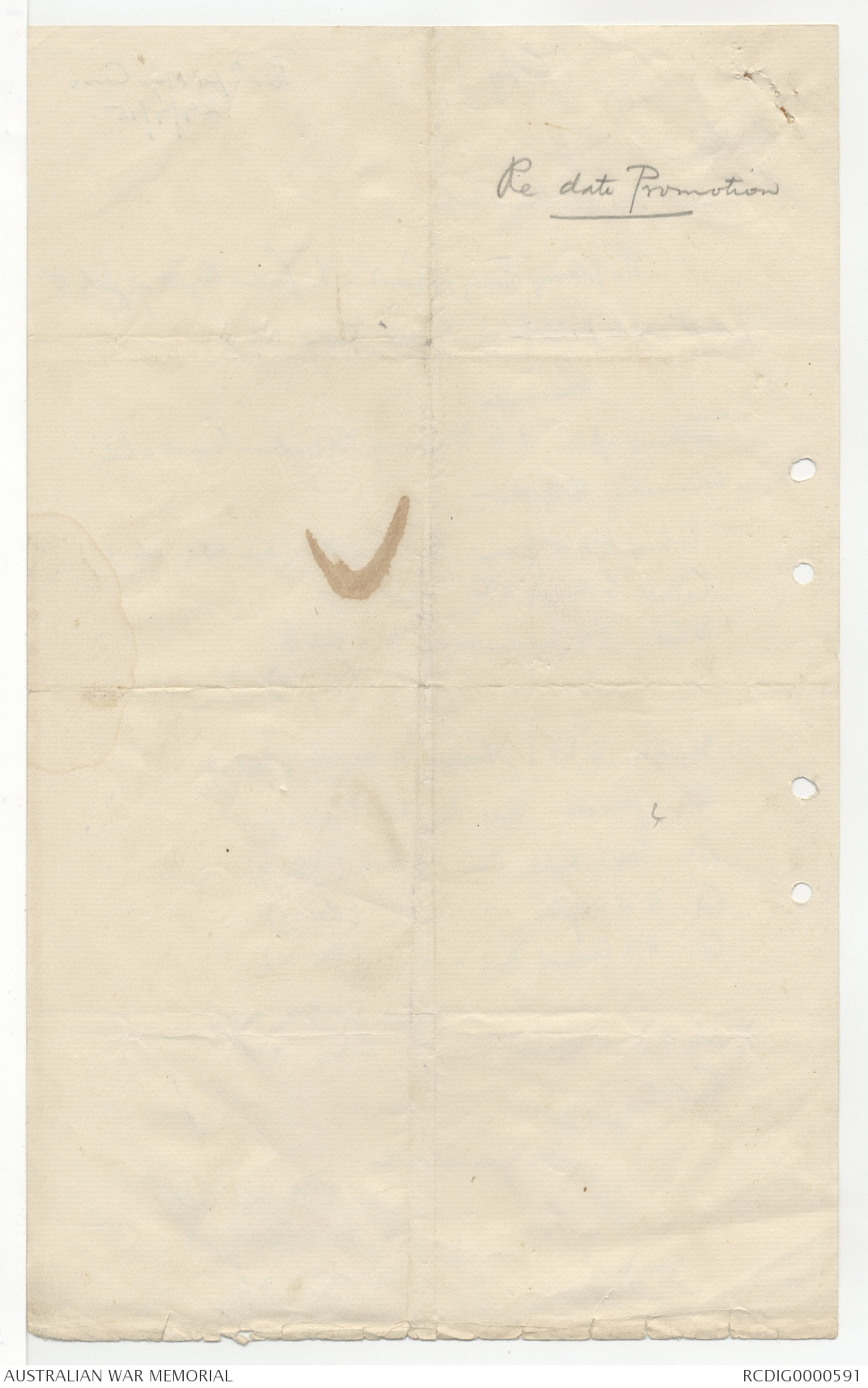
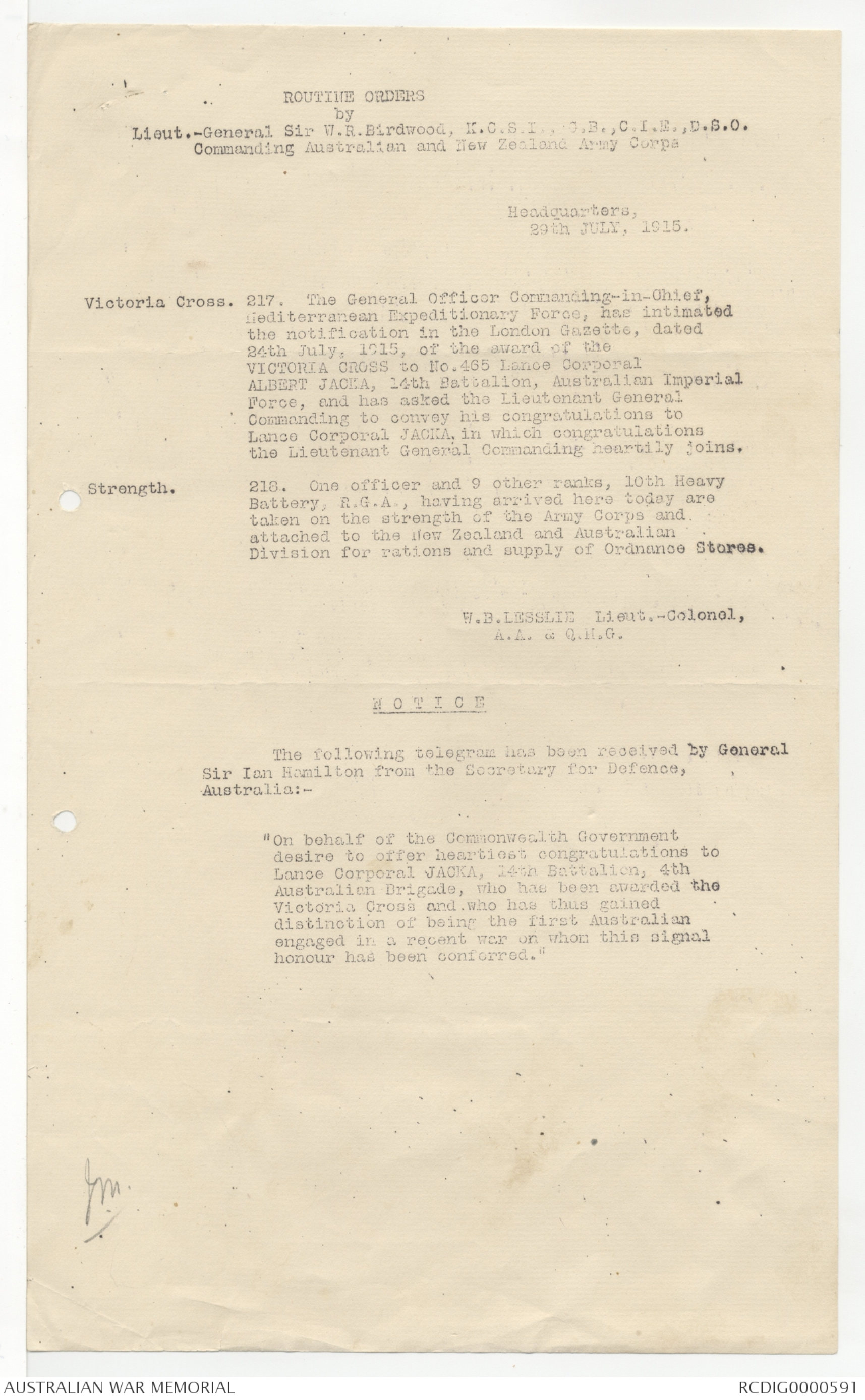
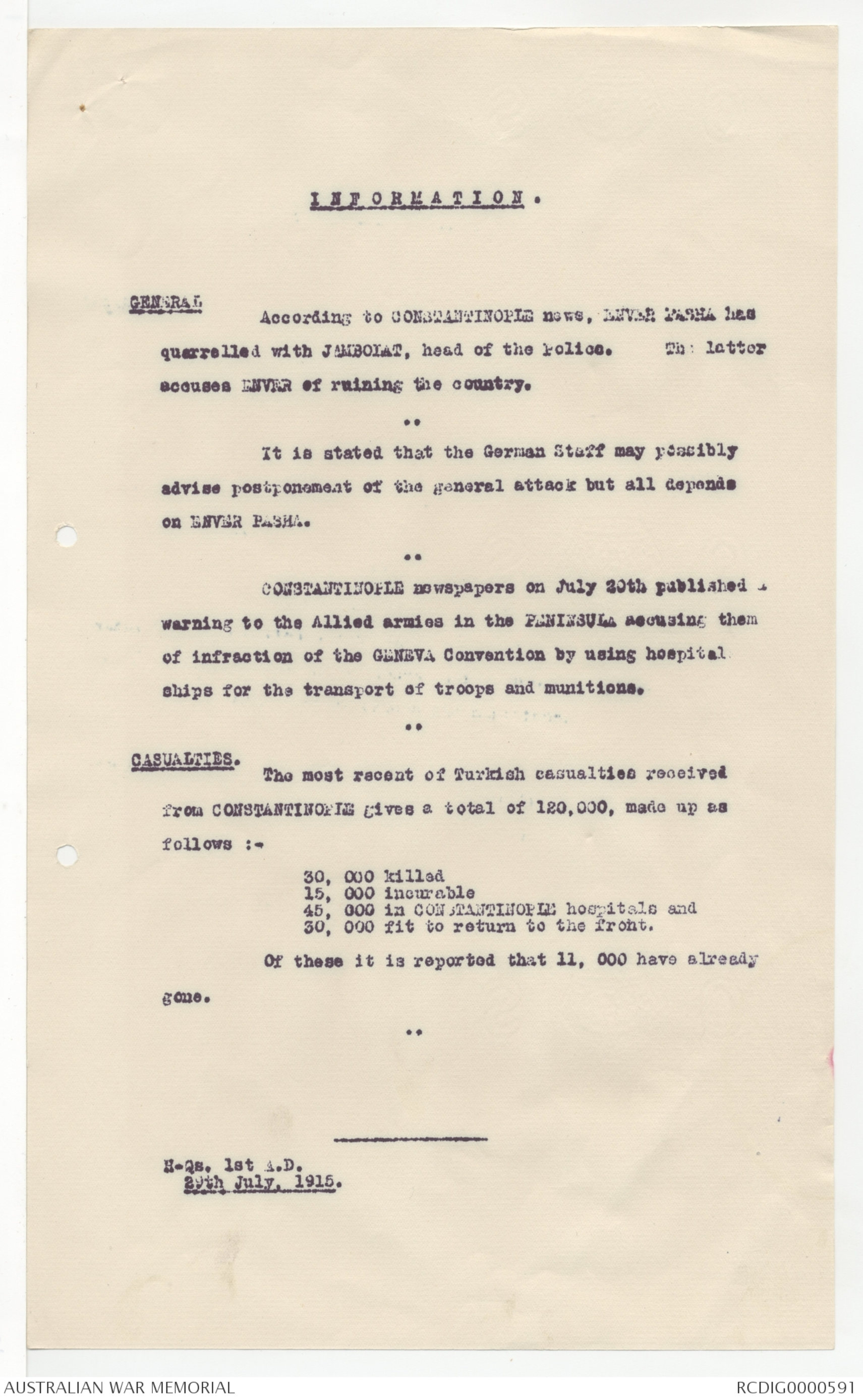
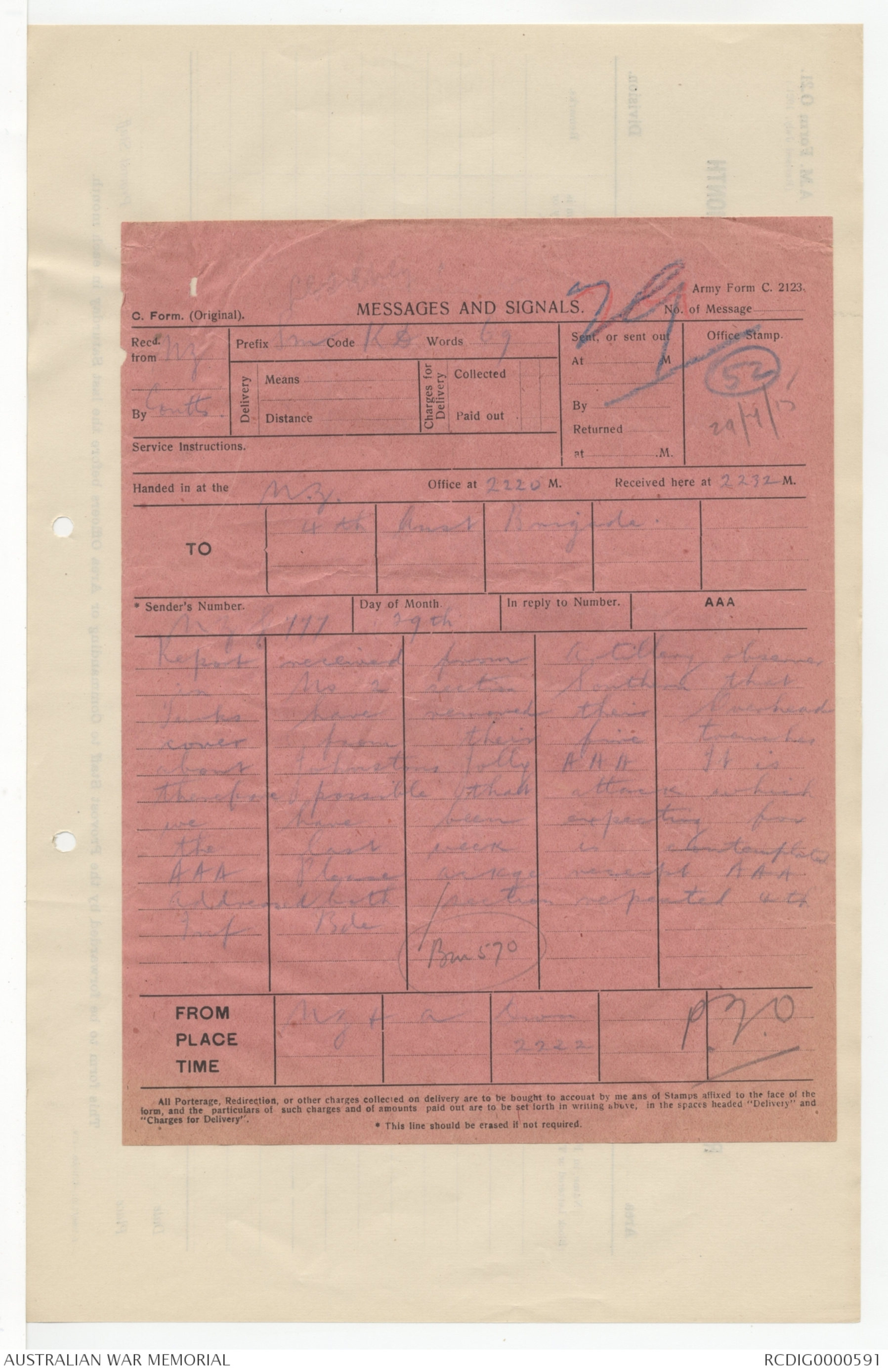
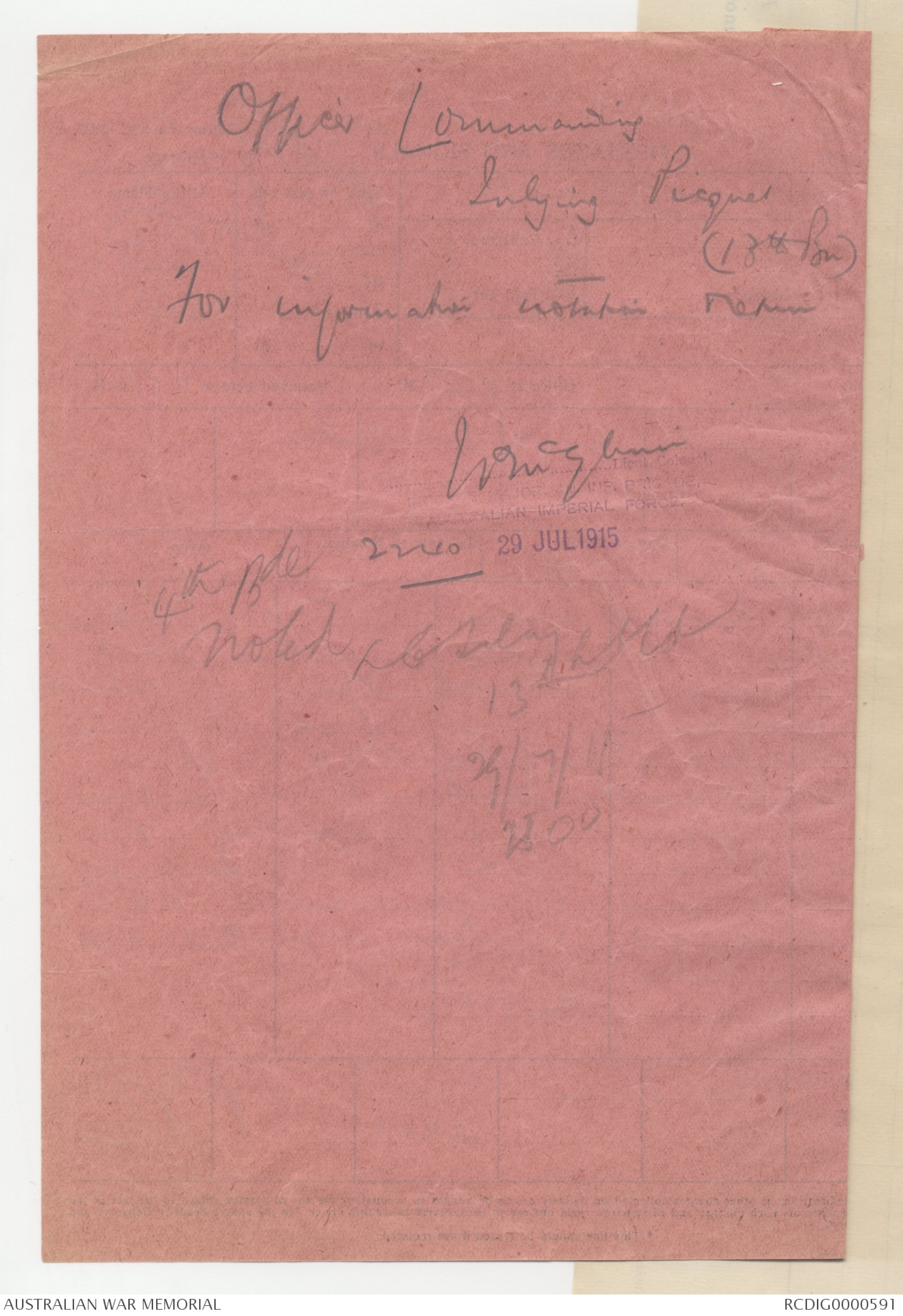
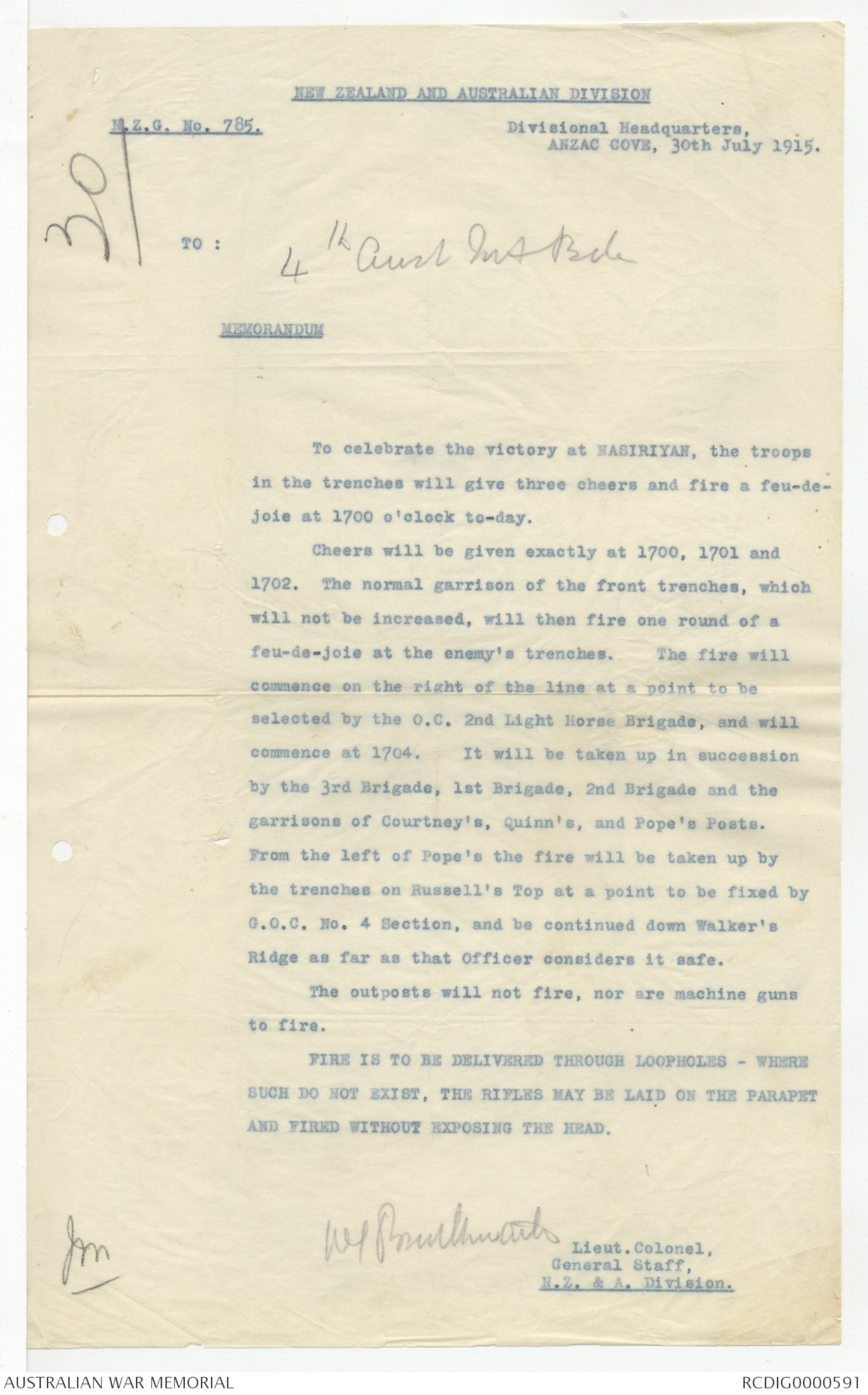
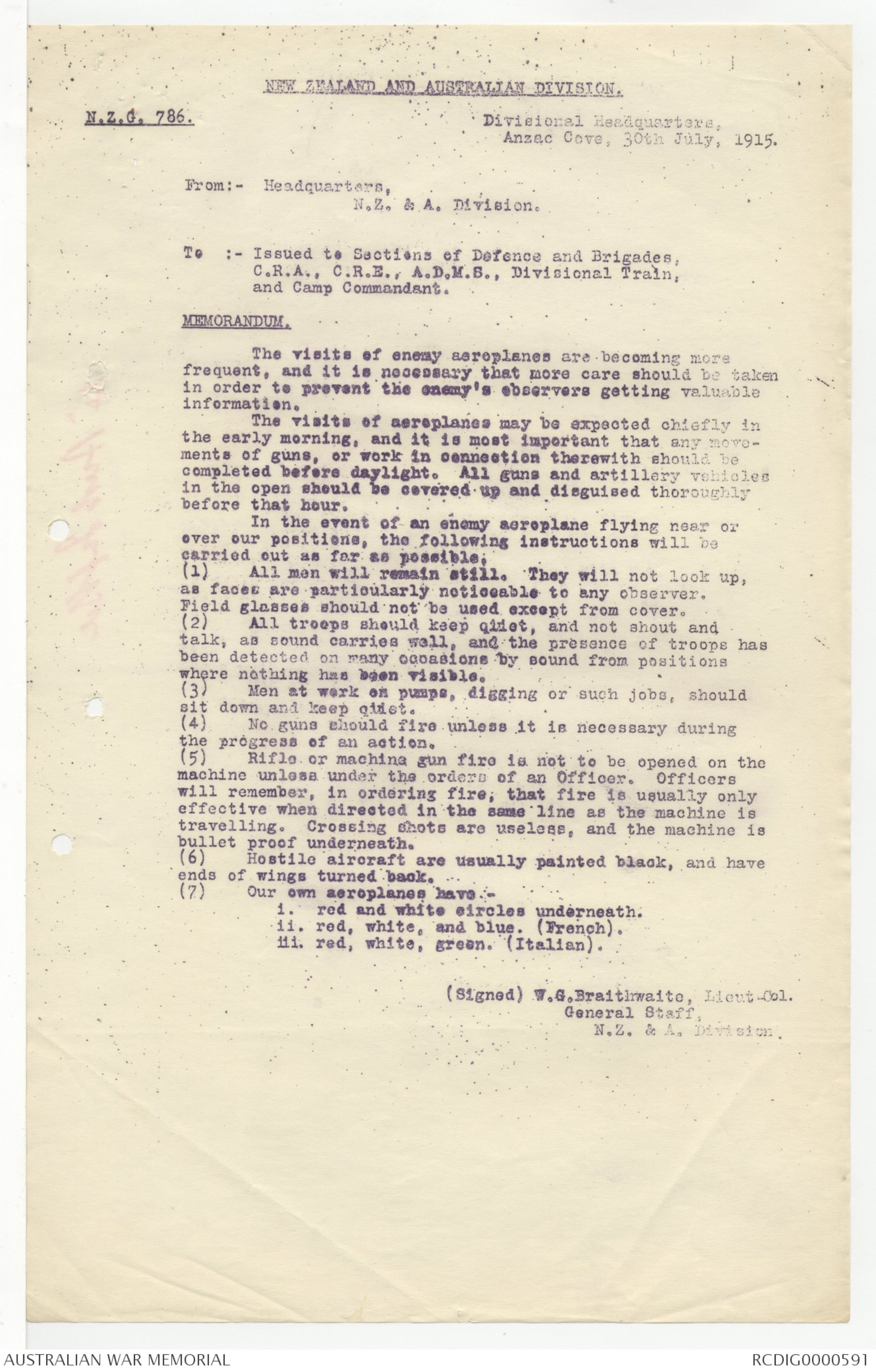
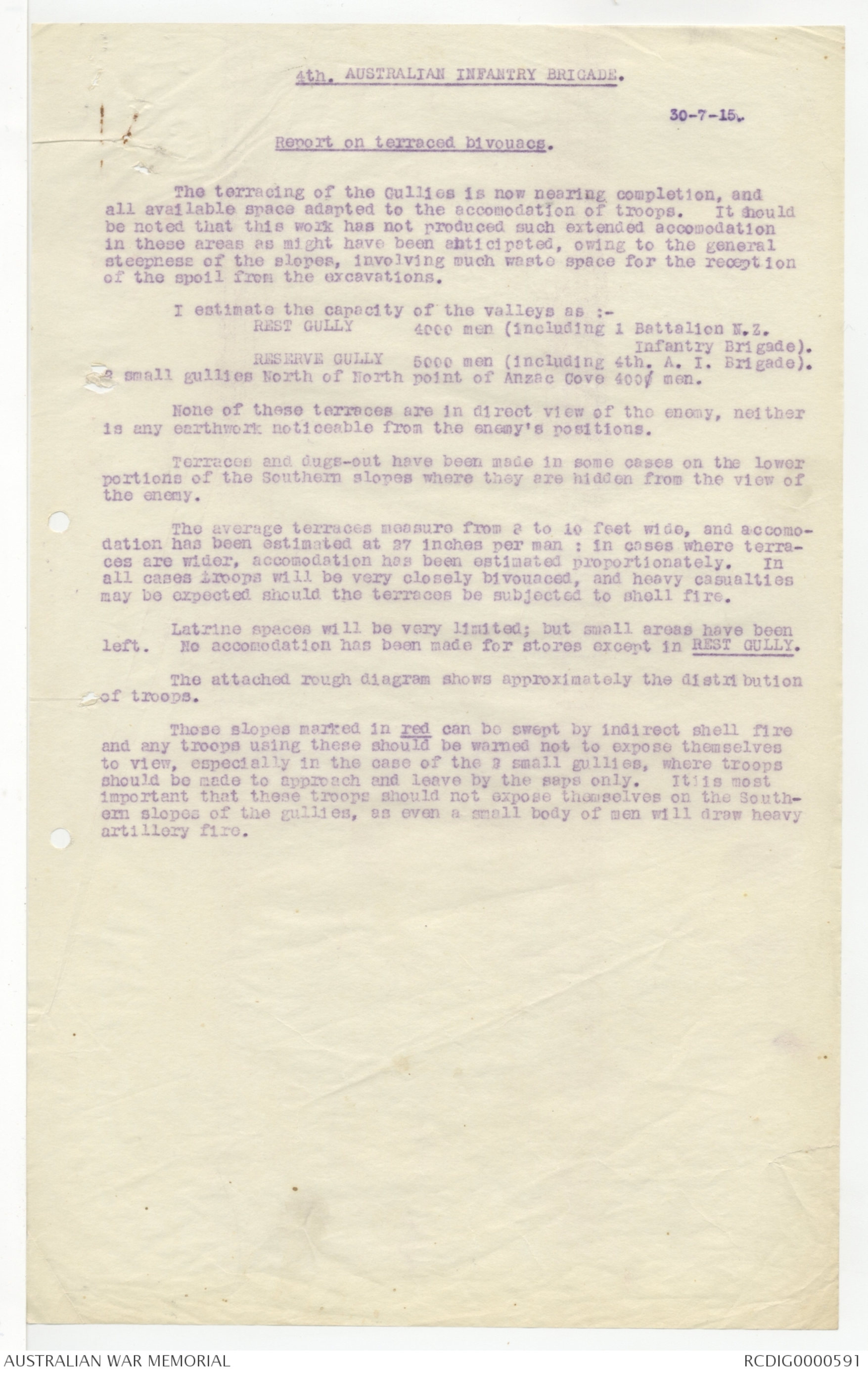
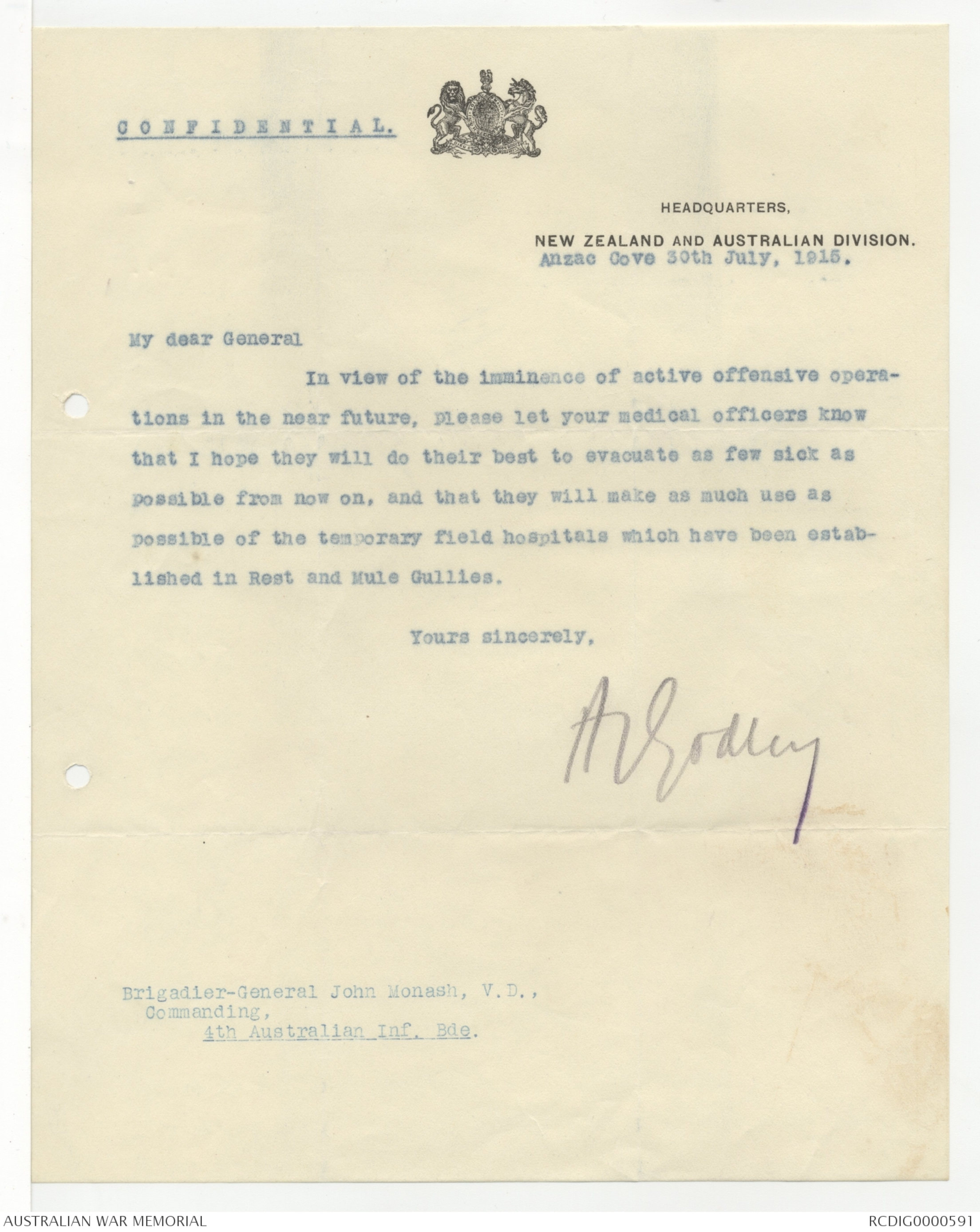
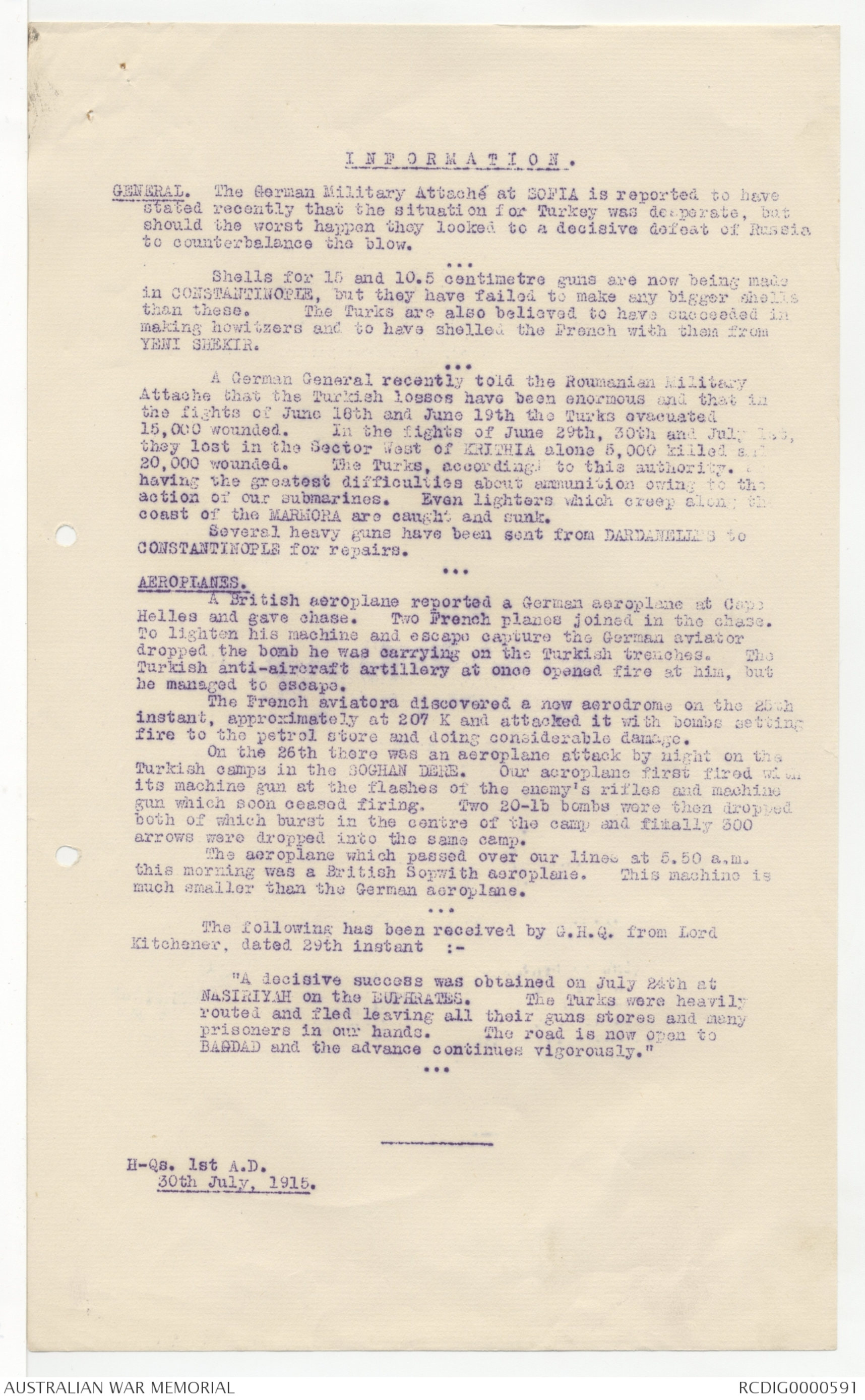
Re date Promotion
ROUTINE ORDERS
by
Lieut.-General Sir W.R.Birdwood, K.C.S.I., G,B., C.I.E., D.S.O.
Commanding Australian and New Zealand Army Corps
Headquarters,
29th JULY, 1915.
Victoria Cross. 217. The General Officer Commanding-in-Chief,
Mediterranean Expeditionary Force, has intimated
the notification in the London Gazette, dated
24th July, 1915, of the award of the
VICTORIA CROSS to No. 465 Lance Corporal
ALBERT JACKA, 14th Battalion, Australian Imperial
Force, and has asked the Lieutenant General
Commanding to convey his congratulations to
Lance Corporal JACKA, in which congratulations
the Lieutenant General Commanding heartily joins.
Strength. 218. One officer and 9 other ranks, 10th Heavy
Battery, R.G.A., having arrived here today are
taken on the strength of the Army Corps and
attached to the New Zealand and Australian
Division for rations and supply of Ordnance Stores.
W. B. LESSLIE Lieut .-Colonel,
A. A. & Q. H. G.
NOTICE
The following telegram has been received by General
Sir lan Hamilton from the Secretary for Defence,
Australia:-
"On behalf of the Commonwealth Government
desire to offer heartiest congratulations to
Lance Corporal JACKA, 14th Battalion, 4th
Australian Brigade, who has been awarded the
Victoria Cross and . who has thus gained
distinction of being the first Australian
engaged in a recent war on whom this signal
honour has been conferred."
J.M.
INFORMATION .
GENERAL
According to CONSTANTINOPLE news, ENVER PASHA has
quarrelled with JAMBOIAT, head of the police. The latter
accuses ENVER of ruining the country.
. .
It is stated that the German Staff may possibly
advise postponement of the general attack but all depends
on ENVER PASHA.
. .
CONSTANTINOPLE newspapers on July 20th published a
warning to the Allied armies in the PENINSULA accusing them
of infraction of the GENEVA Convention by using hospital
ships for the transport of troops and munitions.
. .
CASUALTIES.
The most recent of Turkish casualties received
from CONSTANTINOPLE gives a total of 120, 000, made up as
follows : -
30, 000 killed
15, 000 incurable
45, 000 in CONSTANTINOPLE hospitals and
30, 000 fit to return to the front.
Of these it is reported that 11, 000 have already
gone.
. .
————
H-Qs.1st A.D.
29th July, 1915.
Army Form C. 2123
C. Form. (original). MESSAGES AND SIGNALS. No. of Message ....
Recd. from NZ
By Coutts .
Prefix JM Code KD Words 69
Delivery Means .... Distance ....
Charges for Delivery Collected .... Paid out ....
Sent, or sent out
At.... M
By....
Returned....
at.... M
Office Stamp 52
29/7/15
Service Instructions.
Handed in at the N.Z Office at 2220 M. Received here at 2232 M.
TO 4th Aust Brigade
*Sender's Number. NZg 777 Day of Month. 29th In reply to Number. AAA
Report received from Artillery observer
in No 2 section Southern that
Turks have removed their overhead
cover from their fire trenches
about Johnstons Jolly AAA It is
therefore possible that attack which
we have been expecting for
the last week is contemplated
AAA Please ackge receipt AAA
Addressed both sections repeated with
Inf Bde
Bm 570
FROM nz & a Divn
PLACE 2222 P.T.O
TIME
All Porterage, Redirection, or other charges collected on delivery are to be bought to
accouat by me ans of Stamps affixed to the face of the
form and the particulars of such charges and of amounts paid are to be set forth in writing above, in the spaces headed "Dellivery" and
"Charges for Delivery".
*This line should be erased if not required.
Officer Commanding
Inlying Picquet
(13th Bn)
—
For information notation & return
JP McGlinn Lieut. Colonel,
BRIGADE MAJOR, 4TH INF. BRIGADE,
AUSTRALIAN IMPERIAL FORCE.
2240 29 JUL 1915
4th Bde
Noted L E Tilney
13th Lt Col
29/7/15
2300
NEW ZEALAND AND AUSTRALLAN DIVISION
N.Z.G. No. 785. Divisional Headquarters,
ANZAC COVE, 30th July 1915.
[*30*]
To : 4th Aust Inf Bde
MEMORANDUM
To celebrate the victory at NASIRIYAN, the troops
in the trenches will give three cheers and fire a feu-de-
joie at 1700 o'clock to-day.
Cheers will be given exactly at 1700, 1701 and
1702. The normal garrison of the front trenches, which
will not be increased, will then fire one round of a
feu-de-joie at the enemy's trenches. The fire will
commence on the right of the line at a point to be
selected by the O.C. 2nd Light Horse Brigade, and will
commence at 1704. It will be taken up in succession
by the 3rd Brigade, 1st Brigade, 2nd Brigade and the
garrisons of Courtney's, Quinn's, and Pope's Posts.
From the left of Pope's the fire will be taken up by
the trenches on Russell's Top at a point to be fixed by
G.O.C. No. 4 Section, and be continued down Walker's
Ridge as far as that Officer considers it safe.
The outposts will not fire, nor are machine guns
to fire.
FIRE IS TO BE DELIVERED THROUGH LOOPHOLES - WHERE
SUCH DO NOT EXIST, THE RIFLES MAY BE LAID ON THE PARAPET
AND FIRED WITHOUT EXPOSING THE HEAD.
[*JM*]
WG Braithwaite
Lieut. Colonel,
General Staff,
N.Z. & A. Division.
NEW ZEALAND AND AUSTRALIAN DIVISION,
N.Z.G. 786.
Divisional Headquarters,
Anzac Cove, 30th July, 1915.
From:- Headquarters,
N.Z. & A. Division.
To :- Issued to Sections of Defence and Brigades ,
C.R.A., C.R.E. , A.D.M.S., Divisional Train,
and Camp Commandant.
MEMORANDUM.
The visits of enemy aeroplanes are becoming more
frequent, and it is necessary that more care should be taken
in order to prevent the enemy's observers getting valuable
information.
The visits of aeroplanes may be expected chiefly in
the early morning, and it is most important that any movements
of guns, or work in connection therewith should be
completed before daylight. All guns and artillery vehicles
in the open should be covered up and disguised thoroughly
before that hour.
In the event of an enemy aeroplane flying near or
over our positions, the following instructions will be
carried out as far as possible;
(1) All men will remain still. They will not look up,
as faces are particularly noticeable to any observer.
Field glasses should not be used except from cover.
(2) All troops should keep quiet, and not shout and
talk, as sound carries well, and the presence of troops has
been detected on many occasions by sound from positions
where nothing has been visible.
(3) Men at work on pumps, digging or such jobs, should
sit down and keep quiet.
(4) No guns should fire unless it is necessary during
the progress of an action.
(5) Rifle or machine gun fire is not to be opened on the
machine unless under the orders of an Officer. Officers
will remember, in ordering fire, that fire is usually only
effective when directed in the same line as the machine is
travelling. Crossing shots are useless, and the machine is
bullet proof underneath.
(6) Hostile aircraft are usually painted black, and have
ends of wings turned back.
(7) Our own aeroplanes have. -
i. red and white circles underneath.
ii. red, white, and blue. (French).
iii. red, white, green. (Italian).
(Signed) W.G.Braithwaite, Lieut-Col.
General Staff,
N.Z. & A. Division.
4th. AUSTRALIAN INFANTRY BRIGADE.
30-7-15.
Report on terraced bivouacs.
The terracing of the Gullies is now nearing completion, and
all available space adapted to the accomodation of troops. It should
be noted that this work has not produced such extended accommodation
in these areas as might have been anticipated, owing to the general
steepness of the slopes, involving much waste space for the reception
of the spoil from the excavations.
I estimate the capacity of the valleys as :-
REST GULLY 4000 men (including 1 Battalion N.Z.
Infantry Brigade).
RESERVE GULLY 5000 men (including 4th. A. I. Brigade).
8 small gullies North of North point of Anzac Cove 4000 men.
None of these terraces are in direct view of the enemy, neither
is any earthwork noticeable from the enemy's positions.
Terraces and dugs-out have been made in some cases on the lower
portions of the Southern slopes where they are hidden from the view of
the enemy.
The average terraces measure from 8 to 10 feet wide, and accomodation
has been estimated at 27 inches per man : in cases where terraces
are wider, accomodation has been estimated proportionately. In
all cases troops will be very closely bivouaced, and heavy casualties
may be expected should the terraces be subjected to shell fire.
Latrine spaces will be very limited; but small areas have been
left. No accomodation has been made for stores except in REST GULLY.
The attached rough diagram shows approximately the distribution
of troops.
Those slopes marked in red can be swept by indirect shell fire
and any troops using these should be warned not to expose themselves
to view, especially in the case of the 8 small gullies, where troops
should be made to approach and leave by the saps only. Itiis most
important that these troops should not expose themselves on the Southern
slopes of the gullies, as even a small body of men will draw heavy
artillery fire.
CONFIDENTIAL.
HEADQUARTERS,
NEW ZEALAND AND AUSTRALIAN DIVISION.
Anzac Cove 30th July, 1915.
My dear General
In view of the imminence of active offensive operations
in the near future, please let your medical officers know
that I hope they will do their best to evacuate as few sick as
possible from now on, and that they will make as much use as
possible of the temporary field hospitals which have been established
in Rest and Mule Gullies.
Yours sincerely,
A J Godley
Brigadier-General John Monash, V. D.,
Commanding,
4th Australian Inf . Bde.
I N F O R M A T I O N .
GENERAL. The German Military Attaché at SOFIA is reported to have
stated recently that the situation for Turkey was desperate, but
should the worst happen they looked to a decisive defeat of Russia
to counterbalance the blow.
. . .
Shells for 15 and 10.5 centimetre guns are now being made
in CONSTANTINOPLE, but they have failed to make any bigger shells
than these. The Turks are also believed to have succeeded in
making howitzers and to have shelled the French with them from
YENI SHEKIR.
. . .
A German General recently told the Roumanian Military
Attache that the Turkish losses have been enormous and that in
the fights of June 18th and June 19th the Turks evacuated
15,000 wounded. In the fights of June 29th, 30th and July 1st,
they lost in the Sector West of KRITHIA alone 5,000 killed and
20,000 wounded. The Turks, according to this authority.
having the greatest difficulties about ammunition owing to the
action of our submarines. Even lighters which creep along the
coast of the MARMORA are caught and sunk.
Several heavy guns have been sent from DARDANELLES to
CONSTANTINOPLE for repairs.
. . .
AEROPLANES.
A British aeroplane reported a German aeroplane at Cape
Helles and gave chase. Two French planes joined in the chase.
To lighten his machine and escape capture the German aviator
dropped the bomb he was carrying on the Turkish trenches. The
Turkish anti-aircraft artillery at once opened fire at him, but
he managed to escape.
The French aviators discovered a new aerodrome on the 25th
instant, approximately at 207 K and attacked it with bombs setting
fire to the petrol store and doing considerable damage.
On the 26th there was an aeroplane attack by night on the
Turkish camps in the SOGHAN DERE. Our aeroplane first fired with
its machine gun at the flashes of the enemy's rifles and machine
gun which soon ceased firing. Two 20-lb bombs wore then dropped
both of which burst in the centre of the camp and finally 300
arrows were dropped into the same camp.
The aeroplane which passed over our lines at 5. 50 a.m.
this morning was a British Sopwith aeroplane. This machine is
much smaller than the German aeroplane.
. . .
The following has been received by G.H.Q. from Lord
Kitchener, dated 29th instant : -
"A decisive success was obtained on July 24th at
NASIRIYAH on the EUPHRATES. The Turks were heavily
routed and fled leaving all their guns stores and many
prisoners in our hands. The road is now open to
BAGDAD and the advance continues vigorously."
. . .
_____________
H-Qs. 1st A.D.
30th July, 1915.
 Deb Parkinson
Deb ParkinsonThis transcription item is now locked to you for editing. To release the lock either Save your changes or Cancel.
This lock will be automatically released after 60 minutes of inactivity.